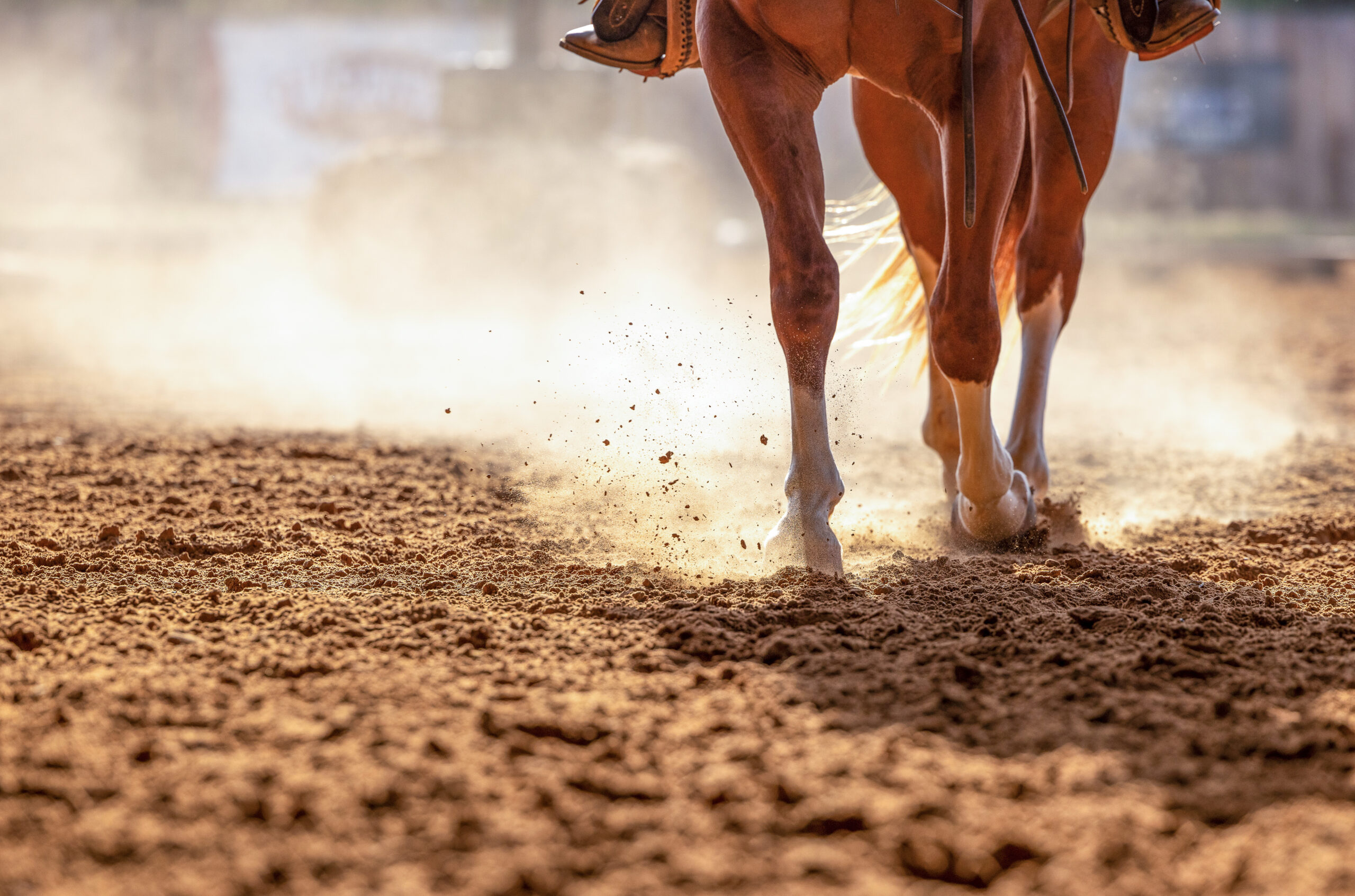
For your horse to move well, his joints need to move freely and without pain. A healthy joint has a joint capsule made up of smooth bones, protective cartilage, and joint-lubricating synovial fluid. Arthritis happens when one of these components is damaged. These cause the cartilage or bone to become damaged. Arthritis can describe any inflammation in your horse’s joints, ranging from acute, recoverable trauma to the more chronic variety.
Simply put, joints are the connections between bones that allow for movement. Every joint has the same basic design made up of the following structures.

Joint Capsule
A fibrous layer that encloses the entire joint, it contains blood vessels and nerves that help supply nutrients and maintain joint function.
Synovial (joint) Membrane
A thin layer of tissue that filters blood and produces synovial fluid.
Synovial Fluid
Fluid released by cells of the synovial membrane that helps cushion the joint. It also provides nutrients to the cartilage and lubrication that facilitates joint movement.
Cartilage
A fibrous, white covering over the ends of the bones that makes up the actual gliding surface of the joint. The cartilage also has shock-absorbing properties that help distribute stresses placed on the joints during movement.
Subchondral Bone
The layer of bone directly below the cartilage that helps absorb shock, and carries nutrients and waste to and from the joint.
Basics of Arthritis
Arthritis is a broad term to describe joint disease. While there are many types and causes of arthritis, the most common type that horse owners encounter is osteoarthritis. This condition occurs when the cartilage normally cushioning the joint surfaces wears away. This leads to bone rubbing on bone, which can manifest as joint swelling, pain, and stiffness.
The disease process is progressive for osteoarthritis, and while there’s no cure, there are many steps you can take to minimize discomfort and improve quality of life for your horse.
Arthritis in the Back
Weakness and instability of your horse’s spine eventually can lead to arthritis in the small facet joints between the vertebrae. Arthritis in these tiny joints will cause the back to become stiff and painful. Nuclear scintigraphy, radiographs, and ultrasound may all play a part in making a diagnosis, which can be difficult. And treatment is challenging; like kissing spines, back arthritis easily can become a chronic performance-limiting problem.
Arthritis in the Hock and Hock Fusion
The hock is made up of five, complex joints. Arthritis in the hock might appear first as back pain, refuasl to turn, or “bunny hopping” at the lope. Fusion of the two lower joints of a horse’s hock can be a remedy for moderate to severe osteoarthritis (where arthritic changes have damaged the cartilage such that bone-on-bone contact is causing the horse pain).
Fusion occurs when the juncture between the ends of two bones transforms from a mobile joint into a stable bony bridge, immobilizing that part of the hock. The joints in the lower hock naturally have minimal movement, which means their fusion can potentially relieve pain without inhibiting the horse’s stride. Fusion sometimes occurs naturally, but more often is the result of a surgical or chemical process. If your horse suffers from hock arthritis, consult your veterinarian about options.
Why Does Arthritis Happen?
Arthritis is a progressive condition affecting the joints, characterized by pain and inflammation. Over time, the inflammatory process can harm the joint’s cartilage, causing discomfort. Cartilage serves as the protective buffer in joints, and it facilitates smooth movement.
In other words, a normal, healthy joint can become damaged with a sudden traumatic event such as a fall or twist in the pasture, or due to heavy repetitive use that’s commonly a part of everyday life for a hard-working performance horse. And if the cartilage in a joint is abnormal to begin with (for example, due to developmental orthopedic disease), simply strolling around the pasture can result in enough trauma to cause the joint to begin deteriorating.
[Learn How to Prevent Arthritis in Your Performance Horse] [Learn How Weight Management Can Help Arthritis]


